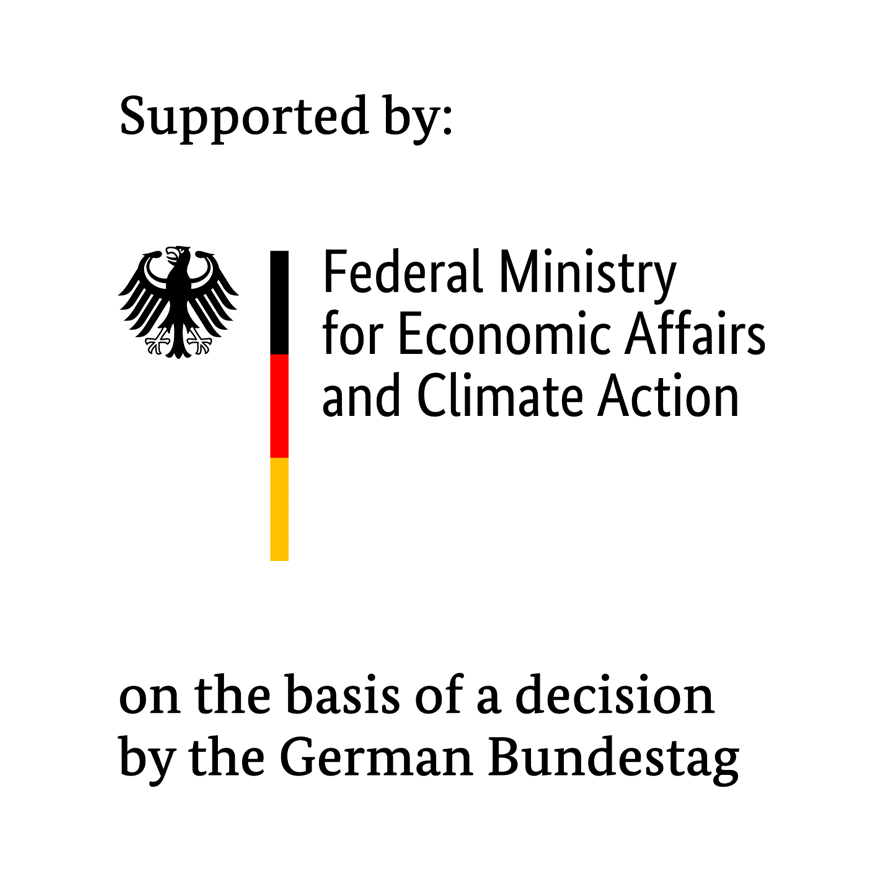| Funding: | Federal Ministry for Economic Affairs and Climate Action (BMWK), Research Association for Steel Application (FOSTA) as the primary recipient |
| Total funding: | EUR 104,708.91 |
| Partners: | Fraunhofer IWES, Fraunhofer IWU, TU Dresden Chair of Computational and Experimental Solid Mechanics, Chair of Electrical Machines and Drives |
| Duration: | 01/2023 - 06/2025 |
- Wind energy plays virtually no role in decentralized energy production in urban areas. Small vertical-axis wind turbines (VAWT) are not competitive due to the high manufacturing costs per kilowatt-hour generated.
- In the “Urban wind turbines with high-performance steel rotor blades” project, the scientists are developing an aerodynamically improved design of a VAWT, which should allow cost-efficient manufacturing.
- The goal is a wind turbine with steel rotor blades which are aerodynamically optimized, inexpensive to manufacture, and recyclable as well as high electrical efficiency and a long lifespan.
- In a subproject, Fraunhofer IWES is responsible for optimization of the rotor blade geometry for increased efficiency and will develop and validate this numerically and experimentally.
The challenge
As far as the energy transition in urban areas is concerned, wind turbines have not played a major role to date. Modern turbine technology focuses on horizontal wind turbines (HAWT) with large rotor blades, powerful generators, and tall towers, for which there is no room in urban areas. VAWT, on the other hand, which are more suitable for use in urban areas due to their size and design, are significantly more expensive to manufacture per kilowatt-hour generated. One reason for this are the rotor blades, which are often produced from fiber-reinforced plastics in manufacturing plants. In addition, the turbines are often not very efficient in terms of electricity production.
The solution
The “Urban wind turbines with high-performance steel rotor blades” project aims to solve this problem. The goal is to optimize the manufacturing technology of an aerodynamically improved design developed in-house in such a way that it allows cost-effective production of VAWT. This will be achieved in particular by considering and developing technologies which enable regional production as independently as possible of long supply chains. The focus is on the entire wind turbine, which is characterized by aerodynamically optimized recyclable steel rotor blades that are inexpensive to manufacture, high electrical efficiency, and a long lifespan. Alongside the technical optimization, the landscape and architectural integration of the turbines into an urban environment is also to be further developed in order to enable high acceptance of this energy source. The researchers will utilize a demonstrator to verify the optimized rotor geometry under real conditions.
In a subproject, Fraunhofer IWES will numerically and experimentally develop and validate the optimization of the rotor blade geometry, including the investigation of surface properties to increase efficiency.
The added value
Wind turbines offer multiple advantages in urban areas: the users’ energy requirements can be fulfilled locally and sustainably. In addition, there is no need to lay long power lines, which increases acceptance for the expansion of renewable energies among local residents. The existing grid infrastructure can continue to be used or only needs to be expanded locally, which speeds up the transformation of the urban energy supply.
The consideration of all the components of the VAWT (rotor blades, mechanical structure, electronics) enables demand-oriented system integration for energy supply within already existing urban energy infrastructures, especially in combination with photovoltaics.
